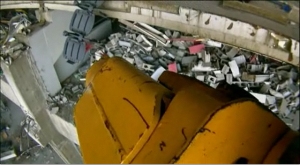Delivering a 3D documentary: what it takes to make the cut
Charting the course of a creative company means selecting projects that fulfill a collective passion for experimentation with cameras, visuals and story.
In the realm of innovation 3D fits nicely with these criteria … so naturally we had to try it.
But to pick up a camera and start shooting was out of the question because there was nothing – absolutely nothing within our price range that we could carry around like an HD camera and meet broadcast specs.
We foraged ahead with Blowdown 3D and after six months of R&D, several camera systems, a month of production in Brazil and nine months of post we have finally delivered a truly groundbreaking 3D documentary.
We met our creative criteria of keeping the 2D and 3D cuts identical and having an engaging, watchable show in both formats. As well we gained stereography expertise and a full 3D production and post facility.
To succeed we needed to 4 key players in place. A business partner who made sure capital was available; a broadcast partner who helped off-set some of the costs and commission a 3D version; a DOP to build and operate a 3D system and an editor who took on the head and heart ache of posting in 3D and edit a show, simultaneously.
Each partner went in blind, worked hard and remained unwaveringly committed – always moving forward despite the many, many set-backs. I cannot overstate the massive technical obstacles that stood in our way – especially in post. For a year it was one step forward, two back – not a terribly long time in the scheme of things for R&D and execution but the money was burning and we had to deliver.
On a larger scale the 3D film industry is hot … but there’s still a lot to learn. At NAB 2011 nearly every booth had a 3D camera system or monitor on display. Unfortunately the consensus from my team that attended is that most of the stereo projects being generated are not visually interesting or executed in optimal 3D.
As far as 3D programming goes, the broadcasters are starting safe with lots of natural history. Over the next few years television is going to steadily move towards 3D penetration. The consumer interest is too great for them too pass up the business opportunity. But for now, I look forward to just seeing how Blowdown 3D is received around the world.
–Ian Herring, President



